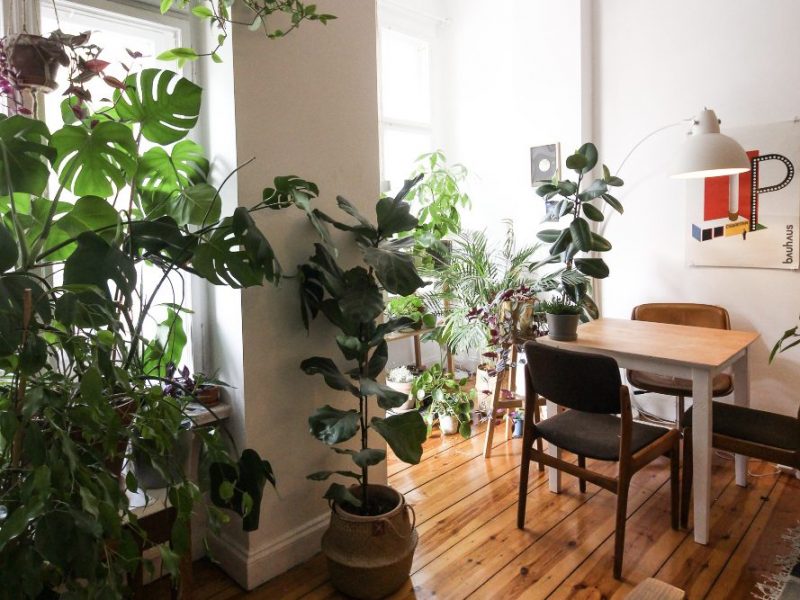
The best tropical plants that survive indoors
You might not think that tropical plants could ever survive in our homes as they just aren’t anything like a tropical rainforest. However, there are several natively tropical plants that can adapt nicely to the temperature, light level and lower humidity level in our homes.
You will find that growing tropical plants indoors will make them smaller, both in overall size and in terms of their leaves. This is because they are bound to the pot and are usually sat near a good light source so don’t have to maximise the size of their leaves to capture sunlight. But all in all, this is a good thing as we wouldn’t want our plants breaking through the ceilings!
Although these plants can adapt to your home, adjusting the environment and care routine to help replicate the tropical environment will go a long way to keeping these plants happy. They’ll love a good misting and investing in a humidifier is always a good place to start.

Bird of Paradise
Strelitzia Reginae
If you’re dreaming of a tropical getaway, then a Bird of Paradise is the next best thing. Native to South Africa, they are loved for their incredible orange and blue leaves that resemble birds (which explains the name). It’s really important that you keep your pets away from the flowers and leaves as they can be very toxic if ingested so we don’t really recommend this one to pet parents, unfortunately.
It’s also important that you have a lot of space when buying a Bird of Paradise plant as they do grow up to about 2 metres in size. But if you have the space for it, then they are the perfect plant for those looking for something a little more exotic.
Find out more in our Bird of Paradise care guide.
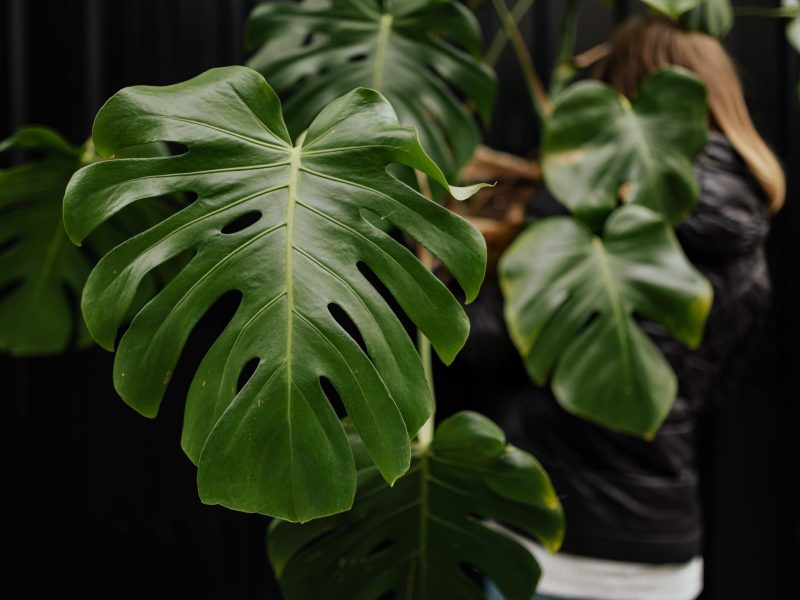
Swiss Cheese Plant
Monstera deliciosa
Native to the rainforests of Central America, the Monstera Deliciosa has very quickly become the most fashionable and photographed houseplant ever. And it’s not difficult to understand why… If their large dark green glossy heart-shaped leaves weren’t enough, their unique splits surely will be!
You might be surprised to learn that the Monstera isn’t actually a fussy plant and is pretty easy to take care of. Bright but indirect light, moderate amounts of water and regularly misting are really the main things to remember.
You’ll find that a lot of more mature Monstera plants are sold with a moss pole as they are climbing plants. In the rainforest, the ariel roots that pop out from the stems will attach themselves to other plants as the plant matures. So a moss pole is a good substitution to help your plant grow and mature.
Find out more in our Swiss Cheese Plant care guide.

African Mask Plant
Alocasia amazonica
If there is one plant that has risen up the popularity ranks recently, it’s the African Mask Plant! You can now buy these at basically every plant shop, market and superstore globally as they are definitely the most popular of the Alocasia family. And we totally understand why they have become so popular, their intense glossy shield-like leaves are adorned with strong white veins which really make them something special.
They aren’t a great plant for beginners, however, as they do require decent light levels, as well as warm temperatures and a consistent high humidity level. Misting this plant is really crucial or it’ll start to develop some issues.
If in the right environment, your African Mask Plant can grow well above 1 metre but this will take many years as they don’t produce that many new leaves each year. This is why it’s crucial you take good care of the leaves your plant does have by regularly dusting and inspecting for issues.
Find out more in our African Mask Plant care guide.
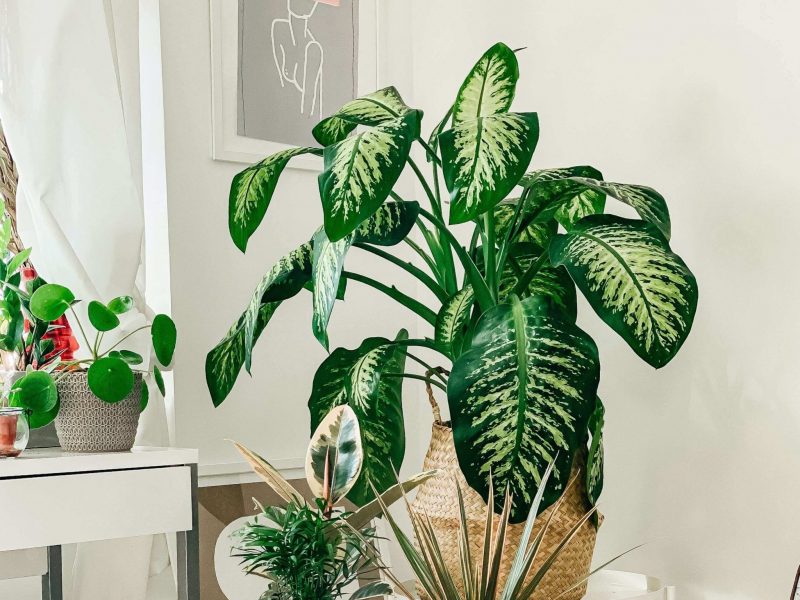
Dumb Cane
Dieffenbachia
With incredible large speckles leaves, the Dumb Cane really does know how to impress! It has got a little bit of a bad reputation, however, as it’s very toxic to both humans and pets and can cause temporary loss of speech if consumed in large quantities (hence the name). However, this is quite rare and whilst important to keep in mind, shouldn’t put you off this plant entirely.
Dumb Cane plants are pretty forgiving and bounce back pretty quickly, so you don’t need to worry about occasionally over or underwatering. Just provide them with plenty of indirect sunshine and the occasional misting and they’ll reward you with some of the most beautiful foliage.
Find out more in our Dumb Cane care guide.
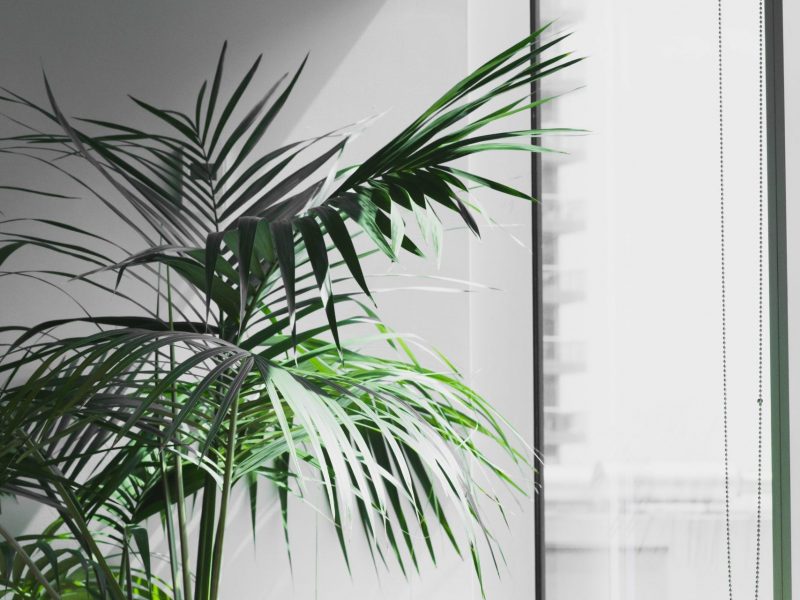
Kentia Palm
Howea forsteriana
Kentia Palms are pretty hardy plants that can stand environments that many other houseplants wouldn’t be able to, making them quite easy to care for. They can grow up to 40 feet outdoors but will rarely get over 13 feet when kept indoors.
They can be quite fussy about watering however and prefer to get little and often as this stops their soil from drying out completely or being soggy for longer periods of time. They also aren’t great with having dusty leaves, so we recommend wiping them down with a damp cloth every now and then to keep them clean.
The good news is that they are completely safe and non-toxic, so perfect for homes with pets or kids!
Find out more in our Kentia Palm care guide.
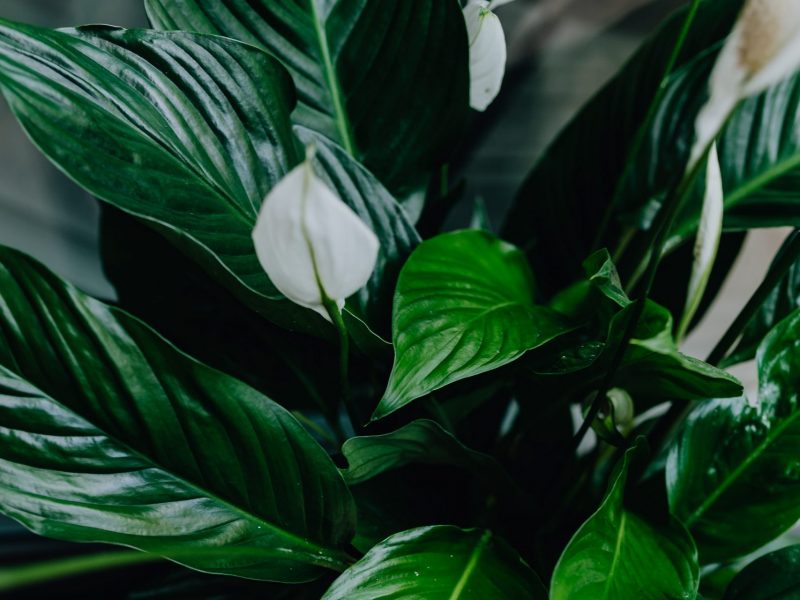
Peace Lily
Spathiphyllum wallisii
There’s a reason that Peace Lilies are so popular, and it’s not just because of their incredible white flowers. They are super low maintenance plants that can adapt and thrive in most homes. They can tolerate all light levels which is super rare for houseplants.
Our favourite thing about the Peace Lily is that it really helps us plant parents out by drooping its leaves when it really needs water. This can help you spot underwatering before it’s really a problem. Within minutes of watering, the leaves will perk up – it’s pretty cool! And if we haven’t sold you on the Peace Lily yet, then you should probably know that they are also one of the best plants at purifying the air and removing chemicals from your home!
Find out more in our Peace Lily care guide.
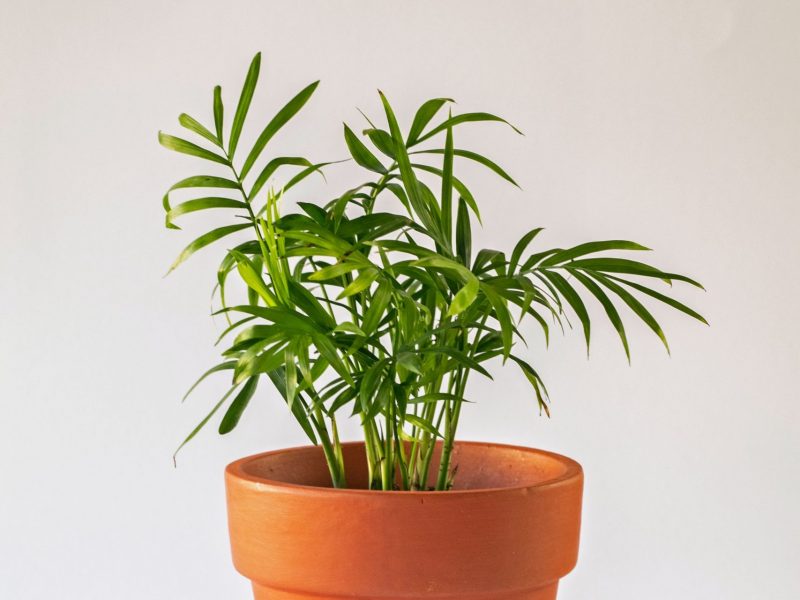
Parlour Palm
Chamaedorea elegans
If you want to grow a palm tree indoors then the Parlour Palm is the one you need! They are easy to care for and adapt well to lower light conditions. When kept indoors the Parlour Palm will stay quite small growing to a maximum of around 8 feet, this makes them manageable and easy to place anywhere in the home.
Provided with good light and some additional humidity in the dryer months your Parlour Palm will be perfectly happy – don’t be discouraged by slow growth as they can take several years to grow an extra 2 feet in height.
Find out more in our Parlour Palm care guide.
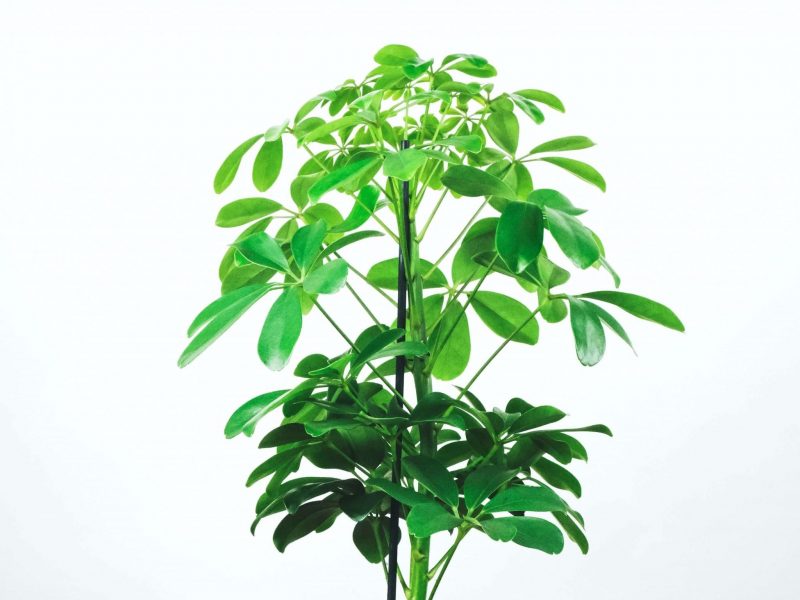
Schefflera
Schefflera arboricola
Also known as the Umbrella Plant because of their dome-shaped leaves, the Schefflera is not only easy to care for but it’s pretty unique too! A mature Schefflera can sometimes have up to 16 little leaves off one stalk, whilst smaller plants may only have 4 or 5.
When it comes to caring for your Schefflera, they are quite hardy and adapt well to different environments. You don’t need to worry about humidity levels etc so it’s pretty simple. One thing to note is that it’s a good idea to rotate your plant every few weeks. Schefflera plants have a tendency to lean towards the light so can become quite unbalance if not turned regularly.
Unfortunately, Scheffleras are toxic to pets and humans so you need to keep this one away from small children or any furry friends that might be tempted to take a bite.
Find out more in our Schefflera care guide.
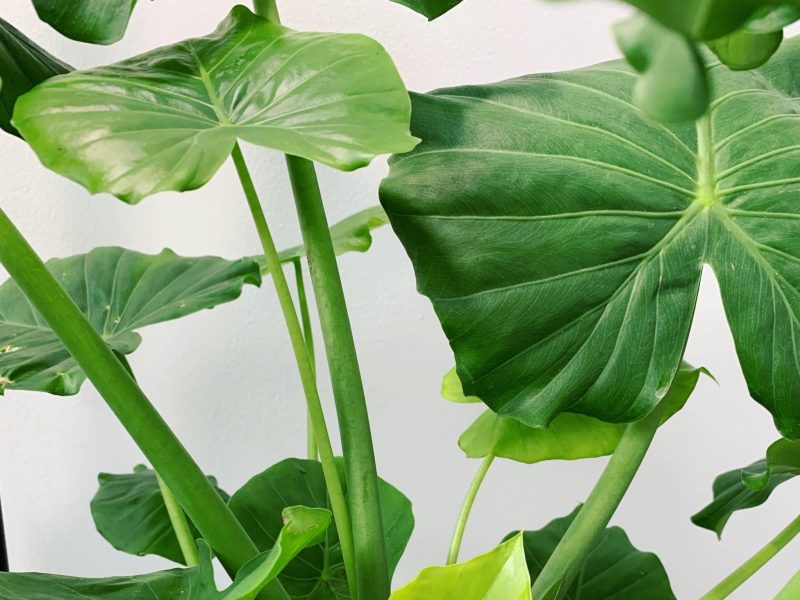
Elephant Ear
Colocasia
Known and loved for their larger than life, heart-shaped leaves, Elephant Ear Plants are the new popular houseplant on the block! Whilst they are most commonly grown outdoors, this doesn’t mean they can’t adapt nicely to your home. With enough light, a little boost to the humidity and good moisture in the soil, your Elephant Ear Plant could soon be boasting leaves that are nearly a meter in length!
It will require a little bit of work though to keep your Elephant Ear Plant thriving, from daily misting, to regularly dusting the leaves as the sheer size of them make them a dust magnet, it’s important to tend to an Elephant Ear Plant to keep it happy and healthy.
Find out more in our Elephant Ear care guide.
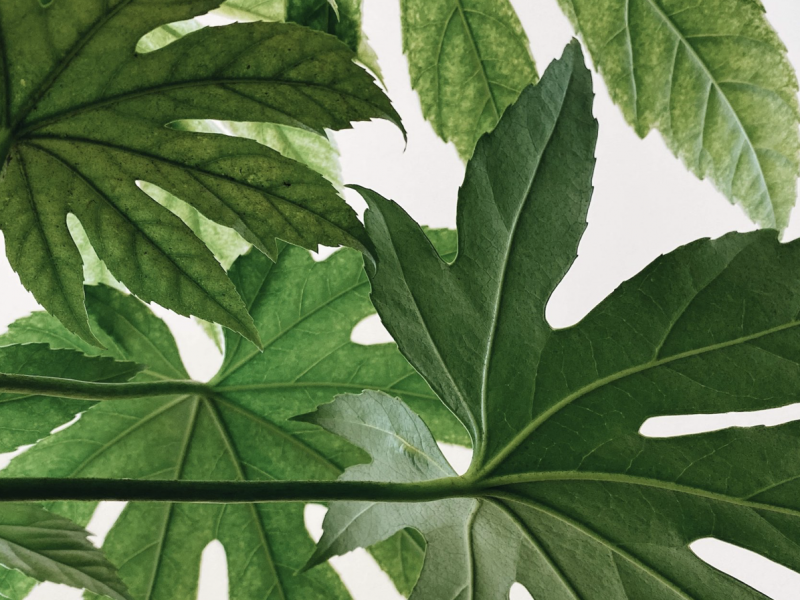
Money Tree
pachira aquatica
The Money Tree is a great tropical houseplant that will be very happy growing in your home. They are super easy to care for and can live for 10–15 years if properly maintained. They originate from Mexico but are very common throughout the world due to their ease of care. In their natural environment they can grow up to 18 meters tall, but it’ll be much smaller in your home thankfully!
One of the great things about the Money Tree is that they can adapt to fluorescent lighting which is rare for tropical plants. This makes them great for offices or other commercial spaces too. With them also being pet safe and simple to keep happy, we think they are a greater starter plant for budding plant parents.
Find out more in our Money Tree care guide.

Fan Palm
Chamaerops Humilis
Perfect for novice plant parents, the Fan Palm is a great way to bring some of the tropics right to your home. It’s one of the few palms that can actually truly thrive in non-tropical conditions so you don’t need to worry too much about having the perfect environment for it. Bright sunshine and moderate watering will keep this one happy and healthy.
Outdoors the Fan Palm can reach several meters tall, but when grown indoors in a pot, it’ll grow very slowly and won’t reach anything near that don’t worry! Although the plant is non-toxic, we still recommend keeping it away from your furry friends as the leaf tips are very sharp.
Find out more in our Fan Palm care guide.
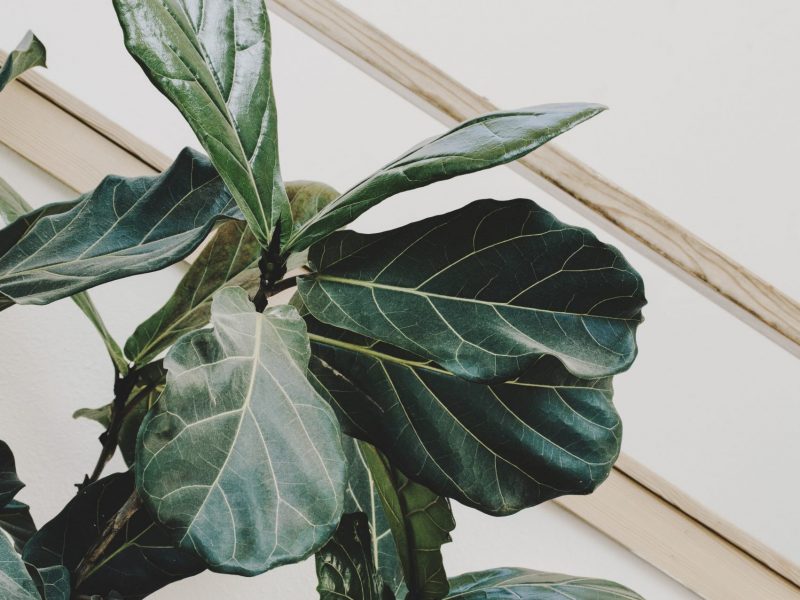
Fiddle Leaf Fig
Ficus lyrata
Native to the rainforests of central Africa, Fiddle Leaf Fig Trees are really stealing all of the attention right now. Their giant dark green glossy veined leaves give you that instant tropical feeling, right in your own home. They actually get their name from their violin-shaped leaves, similar to a Fiddle. Fiddle Leaf Fig Trees like a nice warm, humid environment with plenty of sunshine and a good amount of water to support a strong root system.
If you’re looking for your plant to become the focal point of the room, then the Fiddle is the plant for you as they can grow up to 3 metres tall in the right environment. It’s important to note though that Fiddle Leaf Figs are toxic to pets and humans so not the best chance if there is a risk of leaves being ingested…
You should be able to find a Fiddle Leaf at most independent plant shops globally, but they can have quite a big price tag if you’re looking for a more mature one.
Find out more in our Fiddle Leaf Fig care guide.














